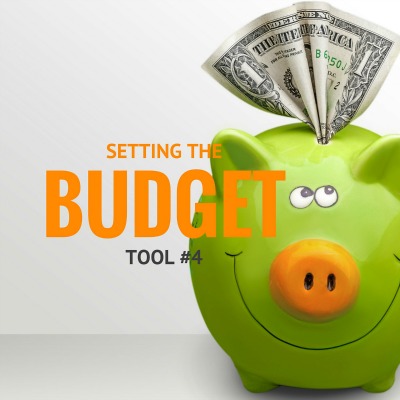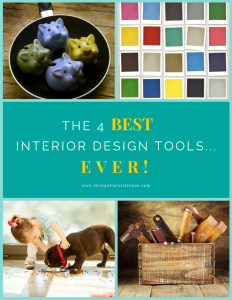
What are you willing to invest?
We’ve arrived at the fourth tool which is “What’s your budget?” Ironically, this is the easiest part to calculate yet…possibly the toughest to contemplate.
Why?
Let’s face it, most projects aren’t emergencies. Think about it. If you have a flood or fire, you re-build because you have to. (Hopefully you have good insurance!)
But when nothing’s ‘broken’, it’s harder to get going. Even when the money’s there, the idea of shopping, construction, even resistance from a spouse – can delay the change you want.
It’s why we use all Four Tools. Let’s review the three that got us here:
First – you’ve established your GOAL and have a clear idea of why you’re making the change.
Second – by examining the change in FUNCTION (whether it’s creating more space or using the space you have more efficiently), it’s easy to see how the change will add quality to your life.
Third – how you FEEL about the change drives you to action. For example:
– The new hardware on the kitchen sink eases the ability to get a glass of water.
– Taking advantage of more natural light lifts your mood every day.
– Changing the position of a door allows for more privacy so you can relax.
Once you visualize the difference, the investment feels exciting! You know the quality of your life is about to improve.
Now you’ve probably heard the old saying “I have champagne taste on a beer budget”. Trust me – you have a lot of company. After all, when you look at images of other projects, it’s not unusual for contractors to use top of the line materials to make it look good.
But it’s not a requirement.
This is where I can help. There are many wonderful items that range in price, quality and design details. As I talk with my clients, we make a list of all the items they’ll need or desire. We include an estimate of costs and determine how much they want to invest.
Next, we discuss different levels of quality and how they fit with the overall picture. One of my services is to work up a price chart to help them see how high-end, mid-range, and budget prices compare. It’s a convenient way to determine where they can invest more or conserve – sort of ‘mix and match’ to get the best result.
Now it’s time to build the plan of action. Doing it first saves time, money, and frustration…and puts you in the driver’s seat. Suppose your contractor wants to alter the size of a cabinet or change a color (sometimes it happens!). Your plan gives you the confidence to follow your dream instead of someone else’s ideas.
Next, choose the course of action that fits your budget and time-line.
1) Have it exactly as you want.
– If you know exactly what you want and you’re willing to make the investment, it may take a little more patience to have the savings ahead of time. Once you have everything in place, you’re ready to go.
2) Value-engineer your project.
– An example of this is investing in a quality sofa, while purchasing a coffee table and lamps that are beautiful to look at, but lower in quality. Decide what items you want to invest in and save money on what’s less important.
The work I do ranges from consultations to engineering entire projects. I customize each project based on an individual’s needs and how much guidance they want. If you’re thinking about a change, you can have an hour of my time for the price of a cup of coffee. Here’s where we can determine if, or how we’ll work together.
Remember, whether you do the project yourself or hire professionals…Universal Design makes your project span the years…regardless of your age when you start it. It ensures your project will enhance your quality of life…and…transforms your home into a more desirable place to live.
For more information, go to my web site, www.DesignForaLifespan.com, call 480-695-1360, or e-mail me at [email protected].
Live easy,
~Jeanette
P.S. For your FREE copy of The 4 BEST Interior Design Tools…EVER! click here .

